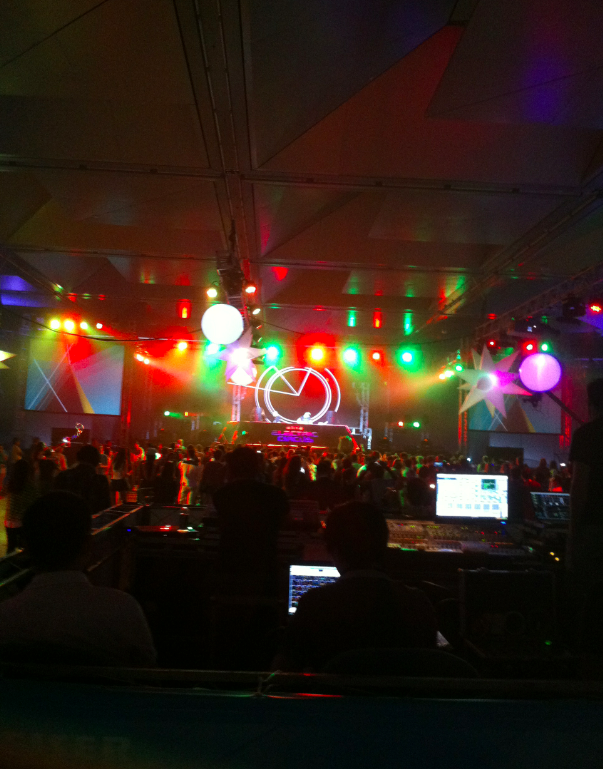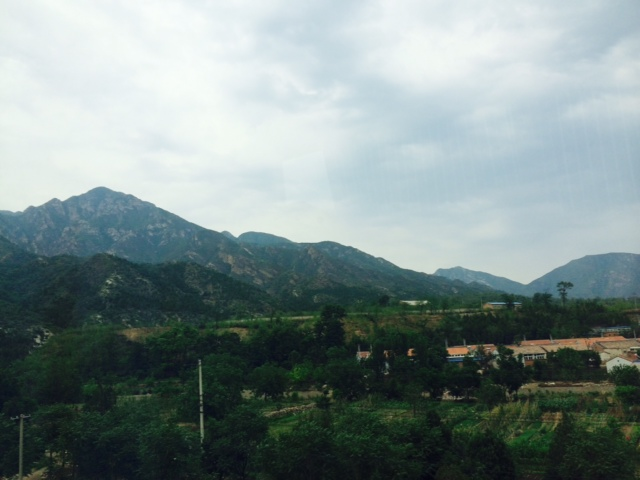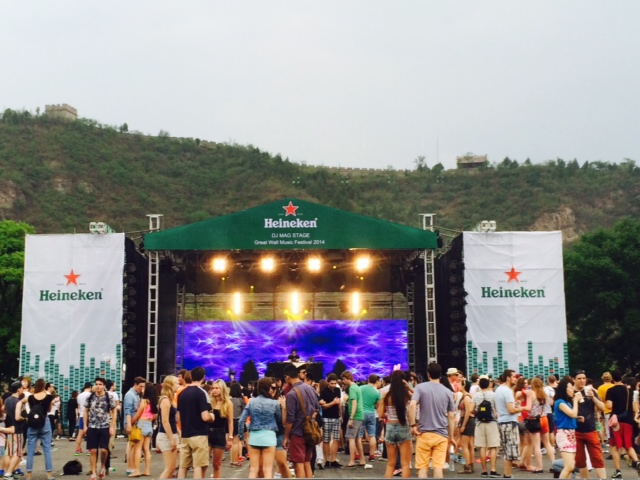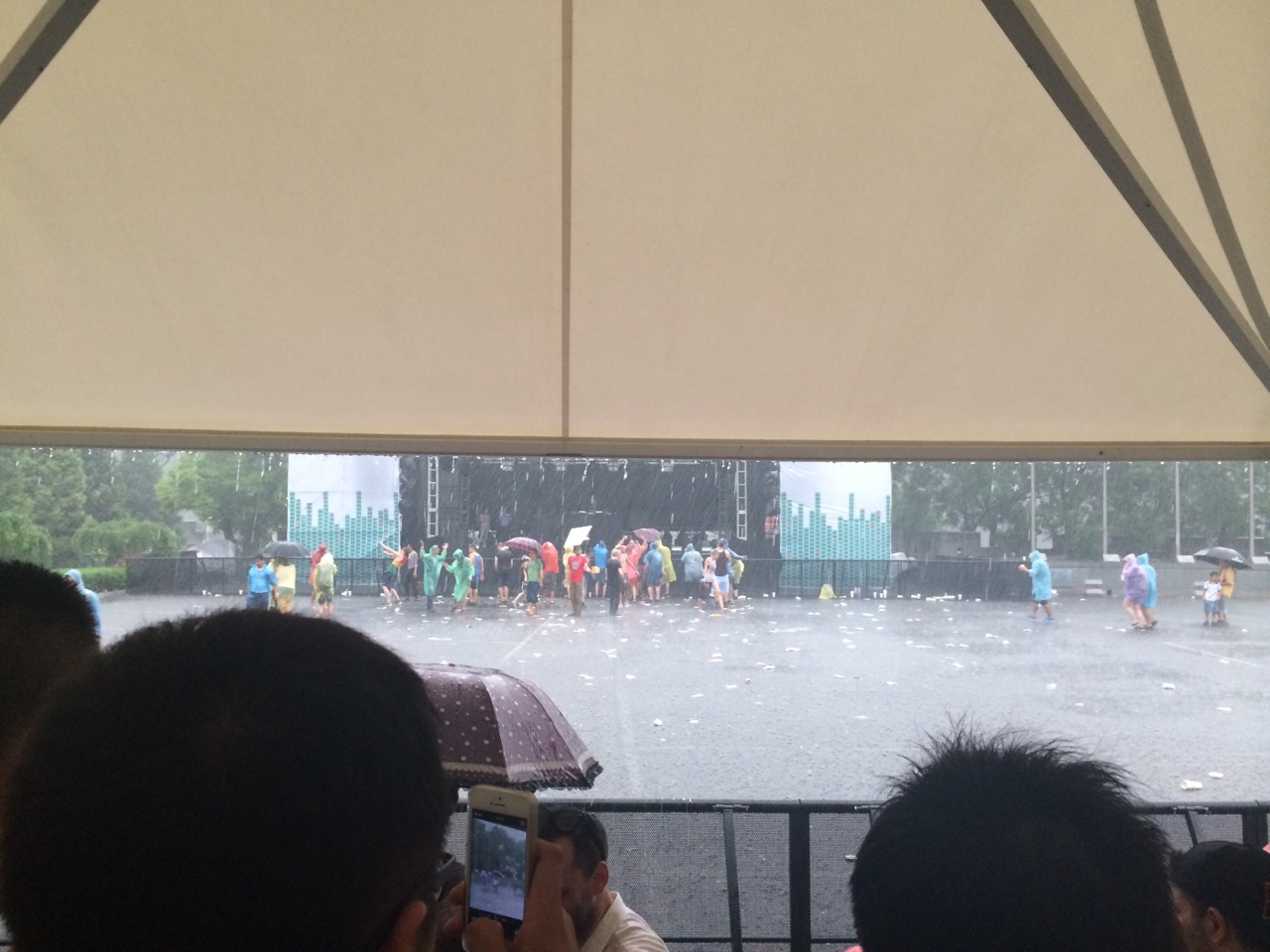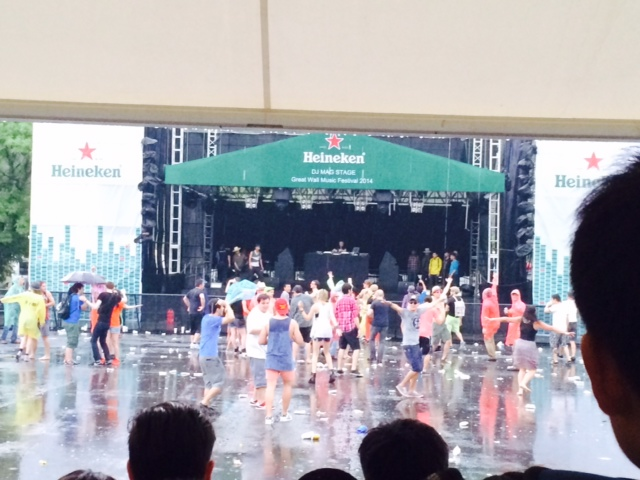Following on from our last article featuring comments on the dualism between 90s club culture and our current EDM festival paradigm (drawing on the views of IMS co-founder Ben Turner and Seth Troxler) we’ve put together a review of Electric Circus – the latest indoor EDM bonanza to hit Shanghai, and the infamous Great Wall Music Festival in Beijing.
Electric Circus
Electric Circus took place in the Pudong Exhibition Centre, an easy ride away from Puxi. We didn’t spot any signage from the Shanghai Science & Technology Museum station but that was ok, just had to follow the string of face-painted revellers and French accents. Top marks for accessibility. And that includes getting in – unlike all of the other festivals we’ve been to this year, there were no queuing issues.
The event occupied two floors (plus the entrance on the ground floor) with heavy branding throughout from sponsors including Heineken, Sprite, Sennheiser (who sorted the organisers with a comprehensive PA system across both floors) and several other exhibitors. The first floor (above the ground floor) had a spacious Boiler Room-esque dance floor encircled with Sennheiser standing speakers.
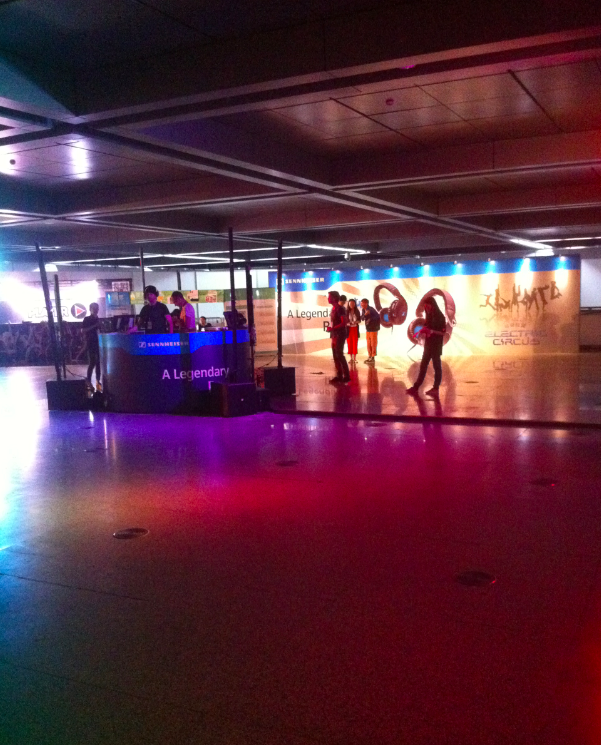
Upstairs was the main stage: the dancefloor was flanked with bars and a raised VIP viewing gallery from which Shanghaiers could exercise their egos over the crowd. Toward the back there were a number of branded installations that added to the saturated advertorial environment.
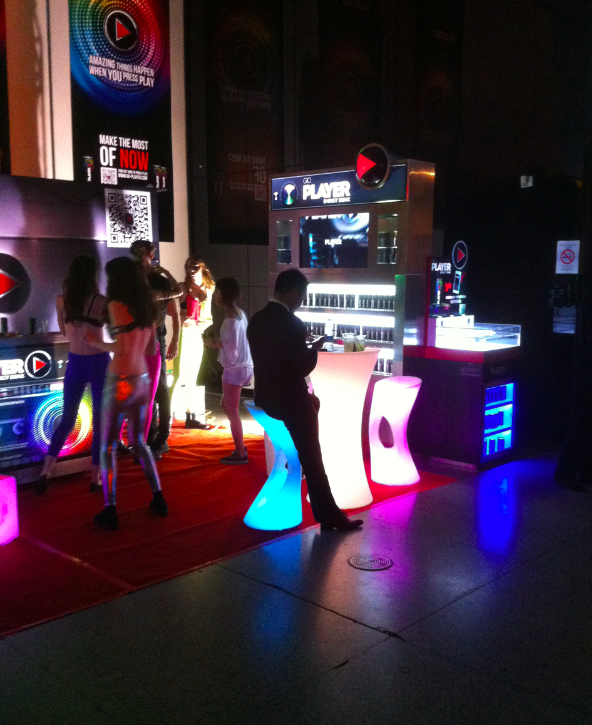
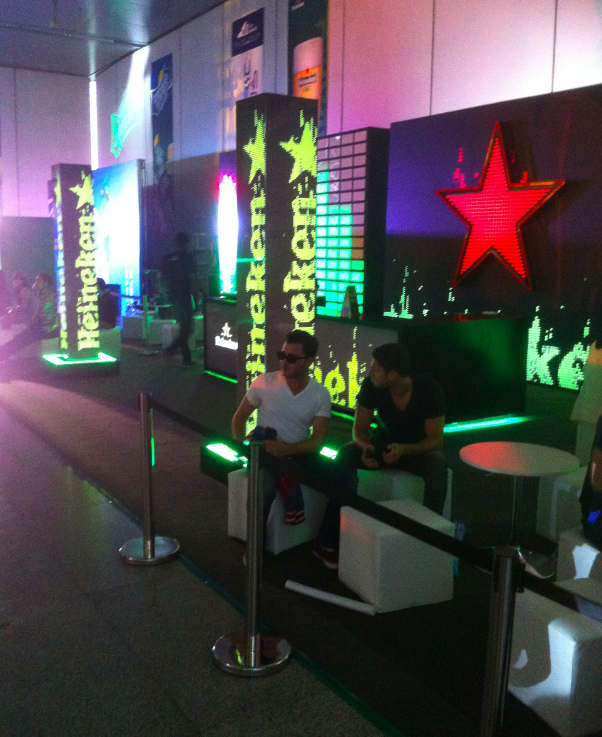
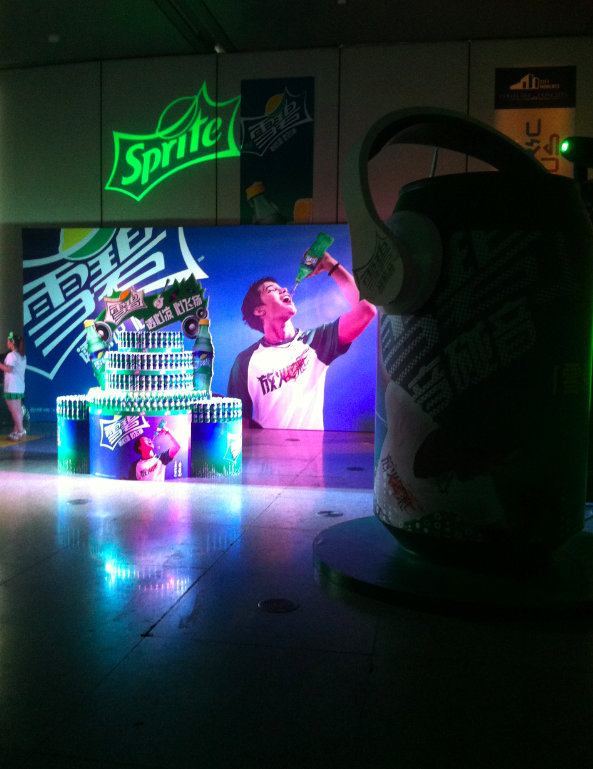
With pre-sale tickets at 250rmb and 400rmb at the door compared to, say, Paul Van Dyk’s show at Myst (150RMB presale) and drinks costing 30RMB (330ml can Heineken / shot) – 40RMB, Electric Circus offered fairly standard pricing for this kind of event, and pretty good value for money if you’re drawing a comparison to a typical night out at a glitzy club in Shanghai. Having said this, despite the support of numerous brands It still worked out pricier than one of the more established outdoor festivals.

As you would expect from an event co-organised by City Moments and Collective Concepts (the people behind Geisha and The Apartment etc.) the audience comprised mostly expats and internationalised Chinese. The crowd was very young and arguably not there for the line-up but rather for the general festival experience. Talking about the festival, local industry figures often referred to it as simply “being what it is”. It’s an expat blowout; innocent fun, good value, but overall not intended to make any lasting impression on the local electronic community. Electric Circus brought the party, and fans enjoyed the sound, the performers, and questionable costumes. As far as finances go, we took a stab at estimating the audience. At around 5pm there were some 400 people spread out across the venue. Two sources said that by around 10-11pm there were supposedly about 1000 (presumably just on the second floor) and 2500 across the site. After factoring in the additional promotion and advertising spend that was required in response to the event’s rescheduling, we reckon best-case scenario the organisers would have just about broken even.
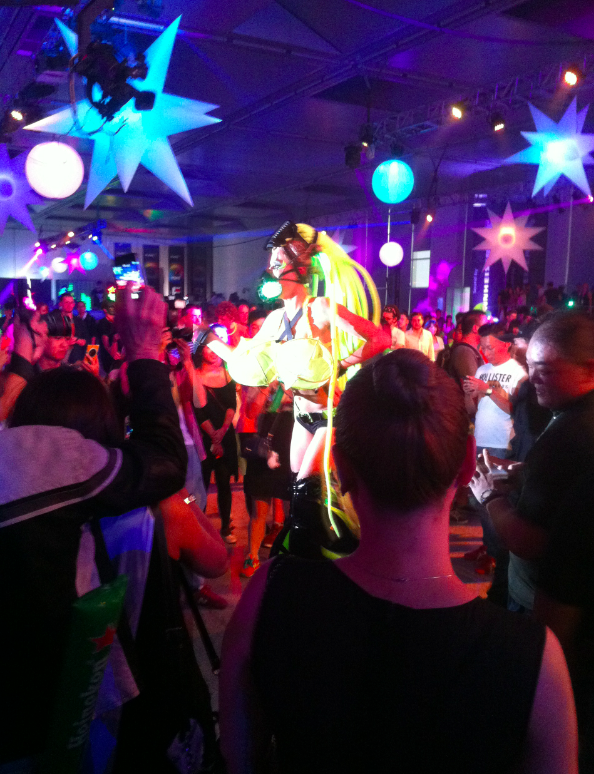
Of course we looked to the wider webosphere to see if any other partygoers had shared their thoughts. We found an interesting article from the lads at Smart Shanghai about an incident involving public indecency and grappling with guards, which surely inspired a collective sigh from the expat community, and incredulous frowns from locals.
Some of our friends were backstage and commented on the quality of the production – the most high-profile issue that came out involved Ben Huang, who wasn’t able / refused to play after staff were unable to hook up the CDJs and deal with various other technical issues.
Overall we’d say the Electric Circus organisers delivered on their promises and met the Shanghai partying community’s expectations. Again, we wouldn’t call it a bar-raising endeavour and generally shy away from events that draw so heavily on overt advertising (there were rolling ads whilst the headline DJs played, for example) however, following the test-of-concept we would expect improvements to the line-up (and continued backing from stakeholders) to further establish the festival concept and see it through to profitability.
Great Wall Music Festival
On June 1st, we took a stroll over to the Great Wall Music Festival, organised by SFU (the cynic in us wonders if this new name “SFU Entertainment” is aimed at making it more attractive to SFX Entertainment, buyers of all things #EDM). 2013 saw David Guetta hit the wall, and this year the festival delivered once again, bringing Paul Kalbrenner and Armin Van Buuren along with other well-known DJs such as Afrojack. Like Electric Circus, it was held on just one day. Tickets were 380rmb (limited Early Bird), 480rmb pre-sales or 580rmb at the door. If you were willing to pay more, VIP tickets could be purchased which included access to areas closer to the stage and rumours of all you can drink Heineken beer.
First off: Getting there
Since the Great Wall is a bit of a trek from Beijing’s city centre, there were buses to shuttle festival-goers located at three points – The Workers’ Stadium, The Agricultural Exhibition Hall, and Wudaokou. Getting there was easy and busses left every 25 minutes or so. The trip was pretty pleasant – only 1.5 hours with nice scenery of mountains, and passengers were pretty tame on the bus too.
Next: Arrival and Entrance
After getting off the bus, we followed the throngs of people going into the festival. There was one huge board, mostly in English, that announced line-up and partners and sponsors. From there, you first entered a preliminary ticket check where security was lax and pretty much anyone could get in. After about a 10-minute walk, there was another round of ticket checks to get in the actual festival area with tight security. Lines were short though and no one had to wait over 10 minutes to get into the festival.
Finally: At the festival
DJ Neo kicked things off at 1pm at the “Heineken DJ Mag Stage” while the “Great Wall Stage” started at 2pm with DJ Spark vs. DJ Kami. Based on extremely rough estimates, there were probably about 6,000 attendees – about 60% foreigner and 40% Chinese or Chinese descent. We asked a handful of Chinese partygoers if they knew who the headliners were, but neither Paul Kalkbrenner nor Armin Van Buuren seemed to register (although they seemed to be vaguely familiar with Kalkbrenner’s Berlin Calling). There was little brand presence other than the Heineken stage and a Heineken post in-between the two stages. Nice! At around 5pm a huge rainstorm hit; all the lighting and some sound was cut but the DJs kept playing and nothing was delayed. Around 8pm, Armin Van Buuren hit the main stage and at 8.30 Paul Kalkbrenner followed behind at the Heineken stage. By this time, the rain had stopped and all sound and lighting was back on. In terms of presentation, there were no dancers, no pyrotechnics, nor were there any other overtly-EDM gimmicks. Those who weathered through the rain had a lot of fun at both stages, although it ended at 10.30pm – a bit too early for electronica if you ask us!
But wait, there’s more!
Overall, the festival seemed pretty well organised and no big mishaps occurred (other than that rainstorm), except for one detail – leaving the festival. Getting there, the busses were very well organised, but leaving was another story. There were waiting times of up to 2 hours to get back into the city and as one could expect a lot of yelling and verbal fighting (but thankfully no violence) with the security guards and staff. In the end we all got back to Beijing unscathed, albeit a bit late. At least there were buses, in contrast to Midi Festival in Beijing last month where there were none.
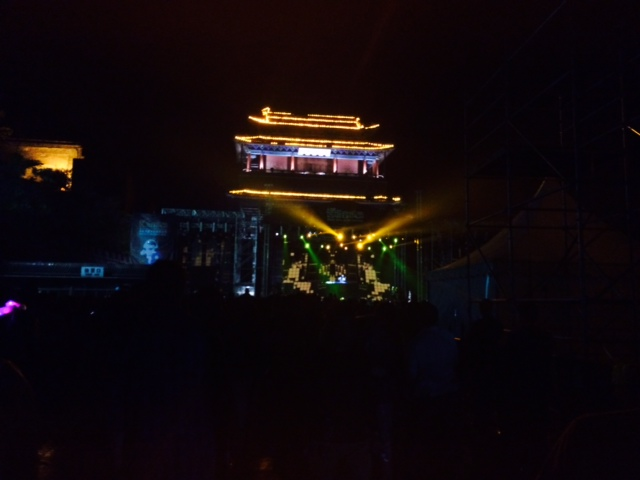
Final thoughts on the Innie / Outie models
Considering our experiences of both festivals, the sentiment was that there is an overt sense of entrapment that accompanies the indoor festival experience. Once you are inside, you can’t escape. And the need to escape increases proportionally to the amount of sensory garbage that gets thrown at you from festival sponsors, who will leverage every nook and cranny to make sure their “message” gets across. And it’s not just the fans that are victim; we can only imagine how DJs must feel performing their carefully crafted sets to advertising-laden visuals. Having said this, there are practical limitations to what is possible in metropolises like Shanghai, so there is arguably still a place for a nuanced indoor festival model.
Any further comments? Hit us up.

